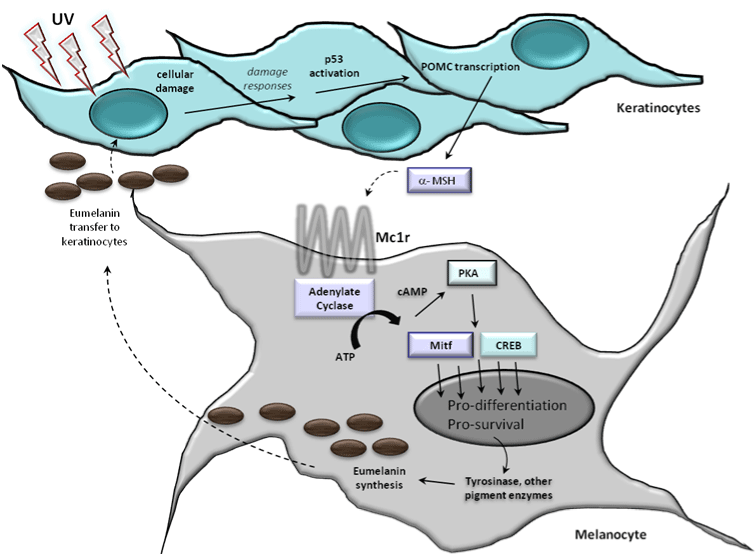
 |
| Figure 3: The adaptive tanning response. Adaptive pigmentation, or the ability to make a protective tan after sun exposure, is dependent on both p53 and the melanocortin 1 receptor (MC1R) [8-9]. UV-induced damage in keratinocytes induces p53-mediated up-regulation of transcriptional expression of the proopiomelanocortin (POMC) gene. The POMC gene encodes a propeptide whose cleavage products include α-melanocyte stimulating hormone (MSH), the cognate ligand of the melanocortin 1 receptor (MC1R) on melanocytes. MSH produced and secreted from UV-exposed keratinocytes binds to MC1R on melanocytes in the basal epidermis, inducing adenylyl cyclase activation and generation of the second messenger cAMP. Elevated cAMP levels trigger a number of downstream events including activation of protein kinase A (PKA) and subsequent up-regulation of two transcription factors- the cAMP responsive binding element (CREB) and microphthalmia (Mitf)- that both mediate up-regulation of melanin production by induction of tyrosinase and other melanogenic enzymes. Thus, MSH-MC1R signaling leads to enhanced pigment synthesis and subsequent transfer of melanin to epidermal keratinocytes. As a result, the skin is more protected against subsequent UV insults. It is likely that UV radiation also has direct, cell-autonomous effects on melanocytes. |